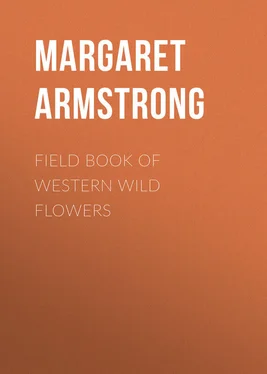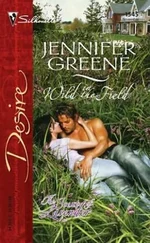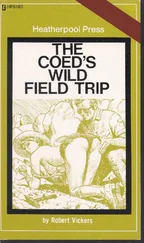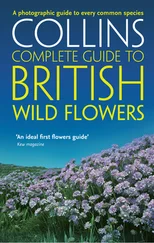Margaret Armstrong - Field Book of Western Wild Flowers
Здесь есть возможность читать онлайн «Margaret Armstrong - Field Book of Western Wild Flowers» — ознакомительный отрывок электронной книги совершенно бесплатно, а после прочтения отрывка купить полную версию. В некоторых случаях можно слушать аудио, скачать через торрент в формате fb2 и присутствует краткое содержание. Жанр: foreign_antique, foreign_prose, на английском языке. Описание произведения, (предисловие) а так же отзывы посетителей доступны на портале библиотеки ЛибКат.
- Название:Field Book of Western Wild Flowers
- Автор:
- Жанр:
- Год:неизвестен
- ISBN:нет данных
- Рейтинг книги:5 / 5. Голосов: 1
-
Избранное:Добавить в избранное
- Отзывы:
-
Ваша оценка:
- 100
- 1
- 2
- 3
- 4
- 5
Field Book of Western Wild Flowers: краткое содержание, описание и аннотация
Предлагаем к чтению аннотацию, описание, краткое содержание или предисловие (зависит от того, что написал сам автор книги «Field Book of Western Wild Flowers»). Если вы не нашли необходимую информацию о книге — напишите в комментариях, мы постараемся отыскать её.
Field Book of Western Wild Flowers — читать онлайн ознакомительный отрывок
Ниже представлен текст книги, разбитый по страницам. Система сохранения места последней прочитанной страницы, позволяет с удобством читать онлайн бесплатно книгу «Field Book of Western Wild Flowers», без необходимости каждый раз заново искать на чём Вы остановились. Поставьте закладку, и сможете в любой момент перейти на страницу, на которой закончили чтение.
Интервал:
Закладка:
Margaret Armstrong
Field Book of Western Wild Flowers
PREFACE
In this little book a very large number of the commoner wild flowers growing in the United States, west of the Rocky Mountains, are pictured and described. It is the first attempt to supply a popular field book for the whole West. The field is vast, including within its limits all sorts of climate and soil, producing thousands of flowers, infinite in variety and wonderful in beauty, their environment often as different as that of Heine's Pine and Palm . In such strange homes as the Grand Canyon and the Petrified Forest of Arizona, or the deserts of Utah and southern California, we find the oddest desert plants, forced to curious expedients in order to sustain life amidst almost perpetual heat and drought, but often displaying blossoms of such brilliance and delicacy that they might well be envied by their more fortunate sisters, flourishing beside shady waterfalls, in a "happy valley" like Yosemite, or a splendid mountain garden, such as spreads in many-colored parterres of bloom around the feet of Mt. Rainier. On the wind-swept plains hundreds of flowers are to be found; many kinds of hardy plants brighten the salty margins of the sea cliffs, or bloom at the edge of the snow on rocky mountain peaks, while quantities of humble, everyday flowers border our country roadsides or tint the hills and meadows with lavish color.
The field included the States of Washington, Oregon, California, Idaho, Nevada, Utah, and Arizona and to designate this whole field the term West is used in this book. The term Northwest designates Washington, Oregon, northern Idaho, and northern California, and the term Southwest covers southern California and Arizona. The flowers found only in the Rocky Mountains are not included, and it may be noted here that exceedingly few of the western flowers cross the Rockies and are found in the East.
This is the only fully illustrated book of western flowers, except Miss Parsons's charming book, which is for California only. The drawings have all been made from life. Allowance must be made for differences in appearance, owing to locality, and the text should be consulted for the size, as, on so small a page, some of the plants must be drawn smaller than others.
Almost all technical botanical terms have been translated into ordinary English, as this book is intended primarily for the general public, but as a large number of the plants given have never before been illustrated, or even described, except in somewhat inaccessible or technical publications, it is hoped that the scientist also may find the contents both interesting and useful.
The nomenclature used, with few exceptions, is that of the American Code. Where these names differ greatly from those in common usage the latter are given as synonyms in brackets, making the book more useful to all readers. The botanical names are marked with an accent. Two accents are used, the grave (`) to indicate the long English sound of the vowel, such as the "i" in "violet," and the acute (´) to show the short sound, such as the "i" in "lily."
Professor J. J. Thornber, of the University of Arizona, is responsible for the botanical accuracy of the text and his knowledge and patient skill have made the book possible.
Thanks are due for most valuable assistance in the determination of a very large number of specimens to Miss Alice Eastwood, of the California Academy of Sciences. Also to Dr. W. L. Jepson of the University of California; Professor A. O. Garrett, of Salt Lake City; Professor A. R. Sweetser, of the University of Oregon; Mr. S. B. Parish, of San Bernardino, Cal.; Mrs. Henshaw, of Vancouver, B. C.; Dr. A. Davidson, of Los Angeles; and Mr. Marcus E. Jones, of Salt Lake City. Also for advice and assistance to Dr. N. L. Britton, and Dr. H. M. Richards of New York; to Dr. Livingston Farrand, of Colorado; Mr. C. R. Orcutt, of San Diego; Mr. Carl Purdy, of Ukiah, Cal.; Professor Flett, of Mt. Rainier National Park; Miss Winona Bailey, of Seattle; Professor J. H. Paul, of Salt Lake City; and many other kind friends.
The arrangement is that originated by Mr. Schuyler Mathews, in his Field Book of American Wild Flowers , which has been found very popular in the East, but, in this book, most of the genera, as well as the species, have been very briefly described.
Margaret Armstrong.New York,
January 1, 1915 .
TECHNICAL TERMS
Corolla.The flower-cup composed of one or more divisions called petals.
Petal.One of the divisions of the corolla.
Calyx.A flower-envelope, usually green, formed of several divisions called sepals, protecting the bud.
Sepal.One of the divisions of the calyx.
Anther.The pollen-bearing organ, usually yellow.
Filament.The stalk-like support of the anther.
Stamen.Anther and filament combined.
Ovary.The seed-bearing organ.
Ovary inferior.With the flower-parts growing from above the ovary.
Ovary superior.With the flower-parts growing from below the ovary.
Placenta.That particular portion of the ovary wall to which the ovules are attached.
Ovule.The body in the ovary which becomes a seed.
Style.The stalk-like projection proceeding from the ovary and terminated by the stigma.
Stigma.The generally sticky and sometimes branching termination of the pistil through which pollination takes place.
Pistil.Ovary, style, and stigma combined.
Regular Flower.Generally symmetrical and uniform in the number of its parts.
Perfect Flower.A flower complete in all the common parts.
Staminate.With stamens and without pistils.
Pistillate.With pistils and without stamens.
Polygamous.Pistillate, staminate, and perfect flowers, on the same or on different plants.
Claw.The narrow or stalk-like base of some petals.
Pedicel.The stalk of a flower in a cluster.
Raceme.A flower-cluster in which the flowers are borne along the flower-stalk on pedicels of nearly equal length.
Spike.A flower-cluster in which the flowers have no pedicels and are arranged more or less closely along the flower-stalk.
Bracts.Small scalelike formations.
Involucre.A circle of bracts below a flower-cluster.
Stipule.Small often leaflike formations, confined to the base of the leaf.
Capsule.A dry seed-vessel, composed of more than one part and splitting open.
Akene.A small dry one-seeded fruit, not splitting open.
WATER-PLANTAIN FAMILY. Alismaceae
A rather small family, widely distributed, growing in fresh-water swamps and streams. The leaves are all from the root, with long sheathing leaf-stalks, and the flowers are regular and perfect, or with only pistils or only stamens; the sepals three; the petals three; the stamens six or more; the ovaries numerous, superior, developing into dry, one-seeded nutlets.
There are a good many kinds of Sagittaria, with fibrous roots and milky juice; the leaves are usually arrow-shaped; the lower flowers usually pistillate and the upper ones usually staminate; the stamens are numerous and the numerous ovaries are closely crowded and form roundish heads. The name is from the Latin for "arrow," referring to the shape of the leaves.
Arrowhead
Sagittària latifòlia
Читать дальшеИнтервал:
Закладка:
Похожие книги на «Field Book of Western Wild Flowers»
Представляем Вашему вниманию похожие книги на «Field Book of Western Wild Flowers» списком для выбора. Мы отобрали схожую по названию и смыслу литературу в надежде предоставить читателям больше вариантов отыскать новые, интересные, ещё непрочитанные произведения.
Обсуждение, отзывы о книге «Field Book of Western Wild Flowers» и просто собственные мнения читателей. Оставьте ваши комментарии, напишите, что Вы думаете о произведении, его смысле или главных героях. Укажите что конкретно понравилось, а что нет, и почему Вы так считаете.












